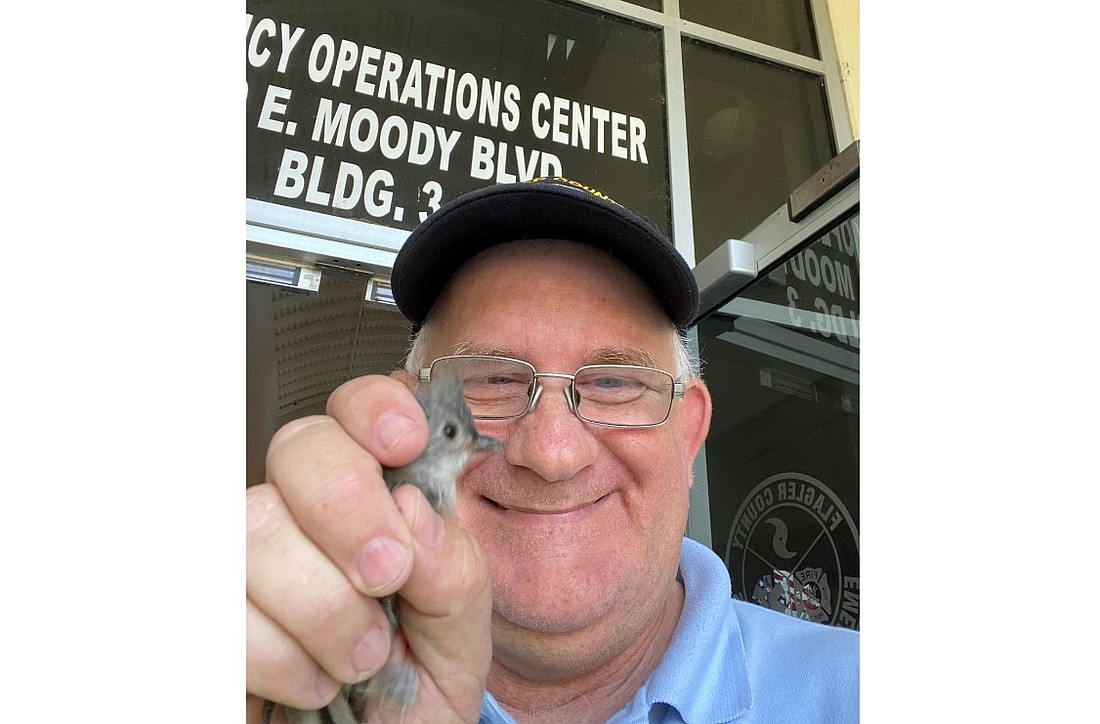- January 17, 2025
-
-
Loading

Loading

A Tufted Titmouse that flitted from the safety of the outer branches of nearby tree canopies was rescued afterhours on Friday, May 21, from inside the Emergency Services building where it had been trapped for the day.
“Patience is the key,” said the bird’s rescuer, Emergency Management Specialist Bob Pickering. “I had to wait until the end of the day so I could create a situation that would allow me to catch it.”
The small gray bird had spent most of the day aloft in the upper ceiling of the lobby and unable to escape. Once everyone left the building for the day, Pickering turned off the lights to bring about an early nightfall and a change in its behavior.
“He went to roost down low,” Pickering said, “which enabled me to safely capture and release the bird.”
Pickering, a 27-year employee with Flagler County (come July 2021), has worked only one other job in his lifetime – an 11-year stint at Marineland.
“I worked hands-on with a variety of wildlife during my time there,” he said. “You learn to be patient and wait.”
The Tufted Titmouse is a year-round resident in Flagler County (and much of the eastern United States), according to www.allaboutbirds.org.
“The large black eyes, small, round bill, and brushy crest gives these birds a quiet but eager expression that matches the way they flit through canopies, hang from twig-ends, and drop in to bird feeders,” the website states.
Facts about the Tufted Titmouse: